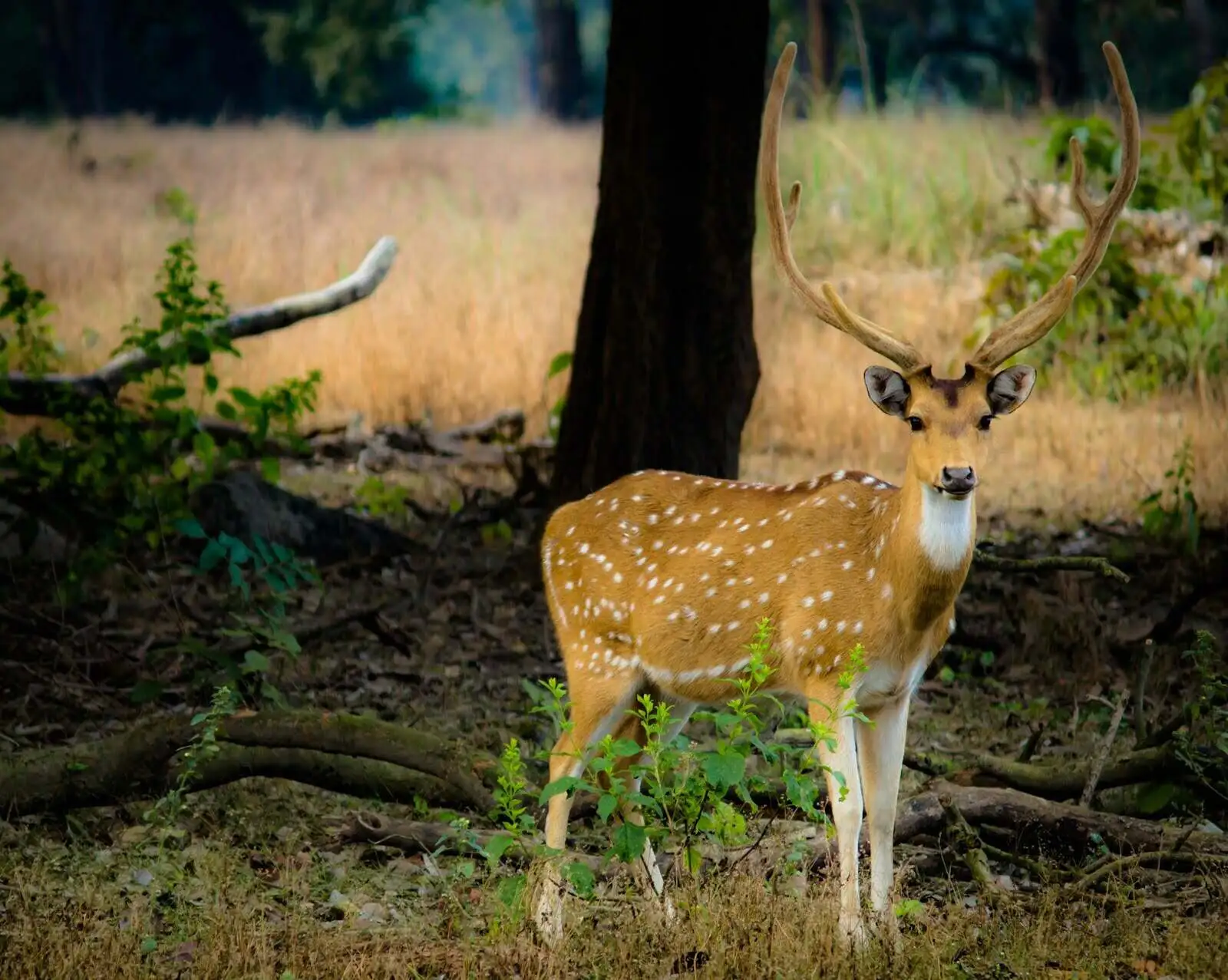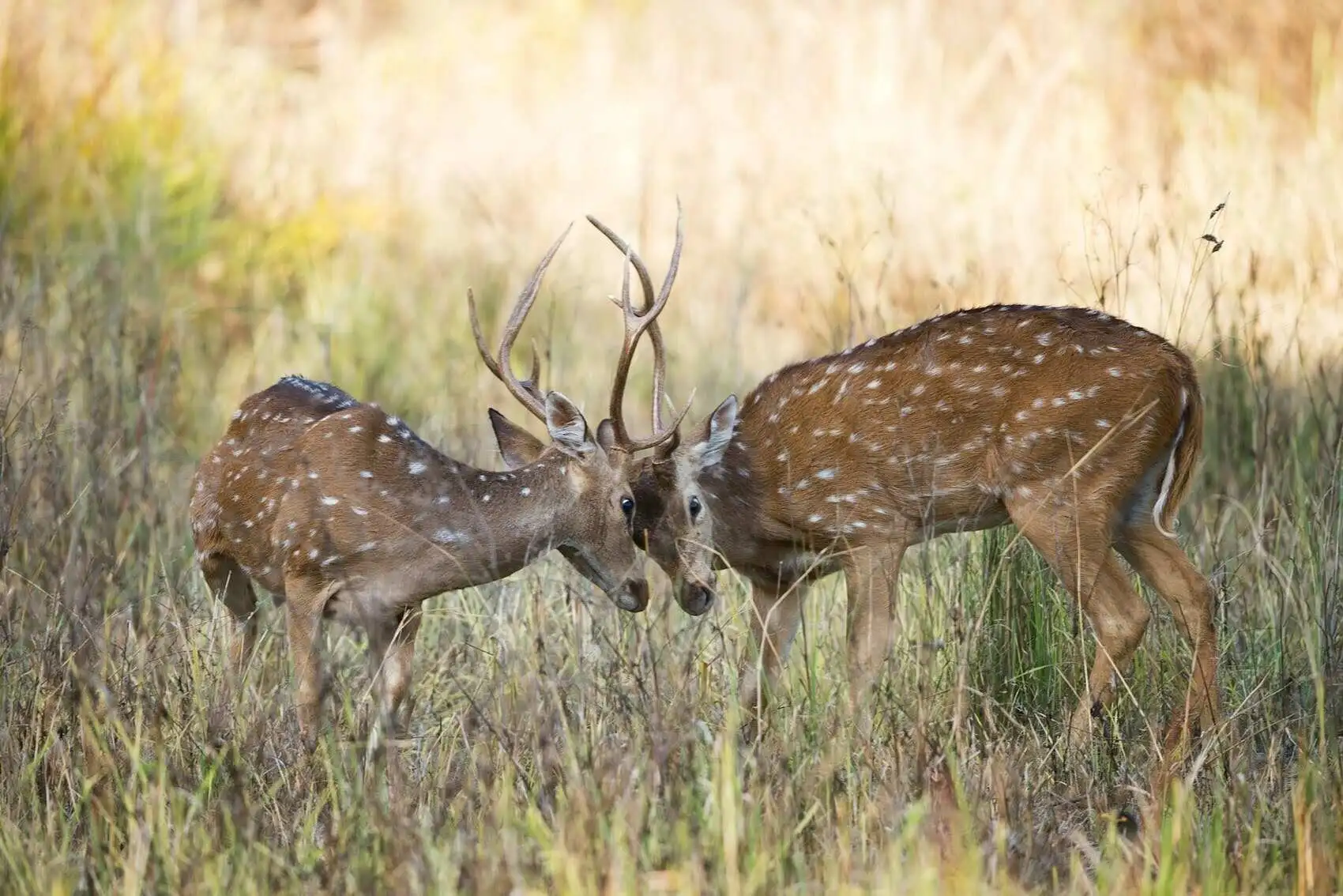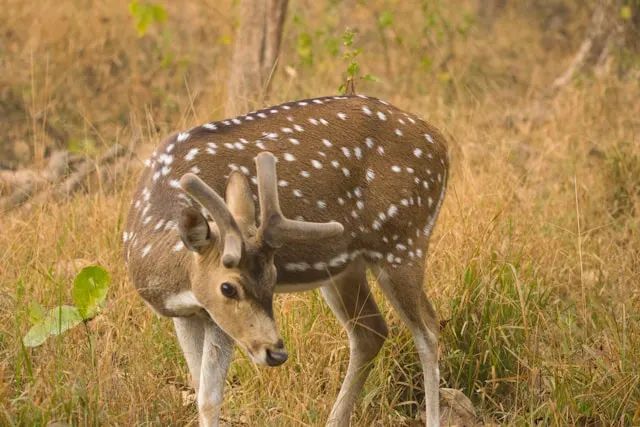Home /
Flora in Tadoba
Tadoba National Park is not only known for its thriving tiger population but also for its remarkable vegetation. The park’s diverse landscape includes dense teak forests, bamboo thickets, and open meadows that sustain a wide range of wildlife. This mix of vegetation creates a balanced habitat, offering food and cover for tigers, herbivores, and countless bird species. From tall teak and mahua trees to flowering shrubs and medicinal plants, Tadoba’s flora showcases the natural richness of central India’s forests.
Dominant Tree Species
The forest cover in Tadoba is primarily dominated by Teak (Tectona grandis), which gives the park its characteristic look. These tall trees create a dry deciduous forest, ideal for tigers and other wildlife. Alongside teak, you’ll find Bamboo, Ain (Crocodile Bark Tree), Bhera, Mahua (Madhuca indica), and Tendu trees scattered throughout the park.
- Teak Forests: Form the main vegetation type, offering shade and shelter for animals.
- Bamboo Thickets: Common in the undergrowth, providing cover for herbivores and predators.
- Mahua Trees: Valued for their flowers and fruits, used by local communities.
- Ain and Tendu Trees:Add to the diversity and support Tadoba’s rich ecosystem.
A unique feature of Tadoba’s forest is its mix of dense green patches and open dry zones, making it a perfect blend of beauty and wilderness.


Grassy Meadows of Tadoba
Tadoba’s grassy meadows are scattered among its dry forests, creating perfect grazing grounds for deer, gaur, and other herbivores. These open patches make wildlife sightings easier, especially around waterholes where animals often gather. The meadows also attract smaller species like hares, jungle fowl, and peafowl, adding life and movement to the landscape.
Medicinal and Lesser-Known Plants
Tadoba’s vegetation includes a variety of medicinal and native plants long used by local communities. Trees and shrubs like Amla (Emblica officinalis), Baheda (Terminalia bellirica), Neem (Azadirachta indica), and Bhera (Terminalia arjuna) are common. Many herbs, creepers, and flowering plants bloom after the monsoon, enriching the forest floor with color and ecological value.
Major Flora of Tadoba – Common and Botanical Names
| Common Name(s) | Scientific Name |
|---|---|
| Teak | Tectona grandis |
| Bamboo | Dendrocalamus strictus |
| Ain / Crocodile Bark Tree | Terminalia tomentosa |
| Bija | Pterocarpus marsupium |
| Tendu / Indian Ebony | Diospyros melanoxylon |
| Mahua | Madhuca indica |
| Jamun / Indian Blackberry | Syzygium cumini |
| Arjun Tree | Terminalia arjuna |
| Bhirra | Chloroxylon swietenia |
| Palash / Flame of the Forest | Butea monosperma |
| Kusum | Schleichera oleosa |
| Lendia | Lagerstroemia parviflora |
| Beheda | Terminalia bellirica |
| Harra / Myrobalan | Terminalia chebula |
| Dhawda | Anogeissus latifolia |
| Bel | Aegle marmelos |
Seasonal Changes in Vegetation
Winter (November to February)
The forest stays fresh and green, with pleasant weather and misty mornings. Grasslands remain lush, creating perfect conditions for birdlife and peaceful jungle views.
Summer (March to June)
Many trees shed their leaves, giving the forest a dry and open look. This season offers better visibility for spotting wildlife. Mahua trees bloom, and their sweet fragrance fills the air.
Monsoon (July to September)
Tadoba transforms into a vibrant green forest. New leaves and shoots cover the trees, and streams flow again. The park stays closed to visitors, allowing nature to rejuvenate.
Tadoba Best Selling Packages
2 Nights / 3 Days
Tadoba Weekend Tour
3 Nights / 4 Days
Tadoba Budget Tour
6 Nights / 7 Days
Tadoba & Pench Safari
14 Nights / 15 Days
Tadoba & Golden Triangle Tour
FAQs – Flora in Tadoba
What is the most common tree in Tadoba?
Teak (Tectona grandis) is the most dominant tree species found across Tadoba’s forest areas.
Why are grasslands important in Tadoba?
They serve as feeding zones for herbivores like deer and gaur and act as ideal hunting areas for predators like tigers.
Can tourists see flowering plants in Tadoba?
Yes, during spring and early summer, species like Mahua, Palash, and Amaltas bloom beautifully, brightening the dry forest landscape.
Are there any rare plants in Tadoba?
Yes, Tadoba is rich in medicinal and native plant species that play a vital role in the forest’s ecosystem and are also used by local communities.




